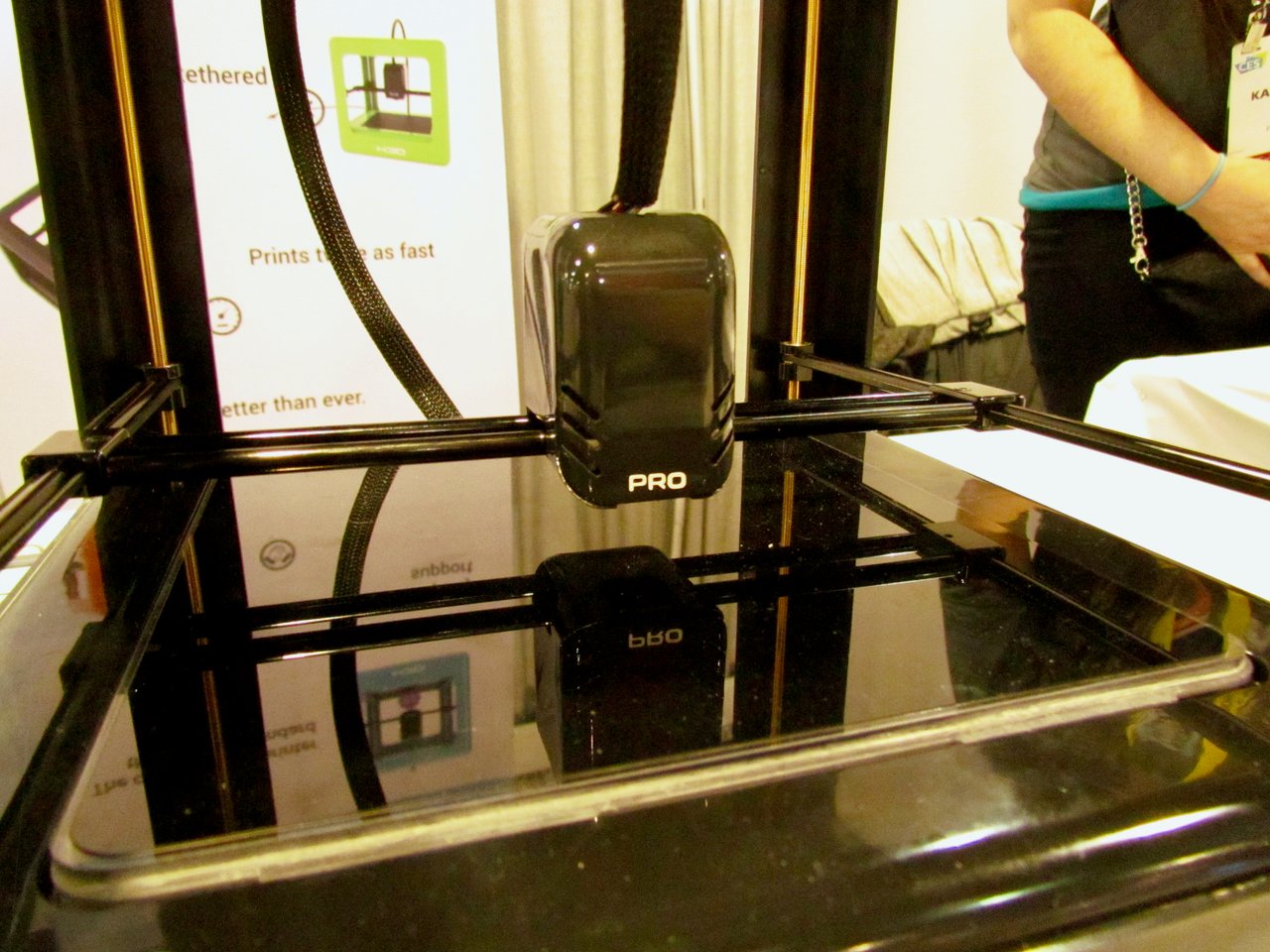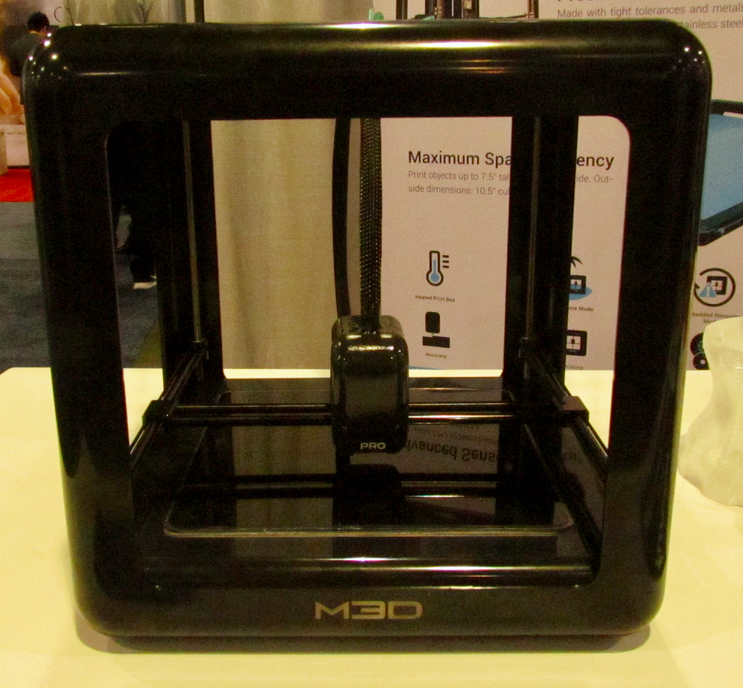
We took a look at the new M3D Pro desktop 3D printer.
This device was announced via a Kickstarter launch several months ago and received significant funding from backers, to the tune of almost USD$500K by around 1,000 participants.
The machine is low cost, but has some very advanced features and although it may appear visually similar to their previous model, the entry level “Micro”, it’s quite different inside. While it does include upgraded features found on other machines, such as a heated print surface, auto-leveling and precision-made metal components (to 8 micron tolerances), there is one feature you won’t find elsewhere: sensors.

The most notable enhancement on the Pro machine is the inclusion of a huge number of electronic sensors, twenty-six in fact. We were told there are “encoders on everything”. The sensors essentially record the position and temperature of many of the machine’s internal components.
The sensors provide a wealth of data that can make many processes on the M3D Pro a lot better. For example, the auto-leveling process is said to be much more accurate as a result of use of additional sensor data.
I don’t know of any other machine that has as many sensors unless it is a very high priced industrial machine, like a Connex from Stratasys, for example. It’s surprising to find such sophistication at this price point, which is only USD$749.
The M3D Pro looks like a pretty decent machine, although I am a bit wary of the internal compartment for filament spools, as it constrains the dimensions of the spools you can use.

By the way, the company has also released several interesting plastic filaments, including a strong “ABS replacement” they call “ABS-R”, a line of temperature-specific color changing plastics, a strong material they call “Tough” and a wide range of colors for basic PLA plastics.
What I find fascinating about this small company is their steady progress. When they first launched a couple of years ago, they designed and delivered a very low cost entry-level desktop 3D printer, raising well over USD$3M at launch. They seem to have used that funding wisely, as they’ve proceeded to expand their production and now have “graduated” to launching a larger, more professional machine, the M3D Pro.
My understanding is that they’ve listened very closely to their clients to focus on features that address the most needed aspects, which seems to have manifested itself in the form of the M3D Pro.
The M3D Pro’s sensors pose a particular challenge, as the software and firmware must be carefully written to take full advantage of the additional information available. This will also require significant amounts of testing to ensure the system works as they intended.
Unlike some other nameless small 3D printer manufacturers, I get the sense that M3D is taking appropriate steps to go through this complex development process to enable delivery of a product that works correctly. You can follow their periodic updates on the machine and its progress, where you will see examples of test prints that are looking pretty decent.
That’s good news and certainly a signal that this is a well-managed company that can deliver what it proposes.
Via M3D

